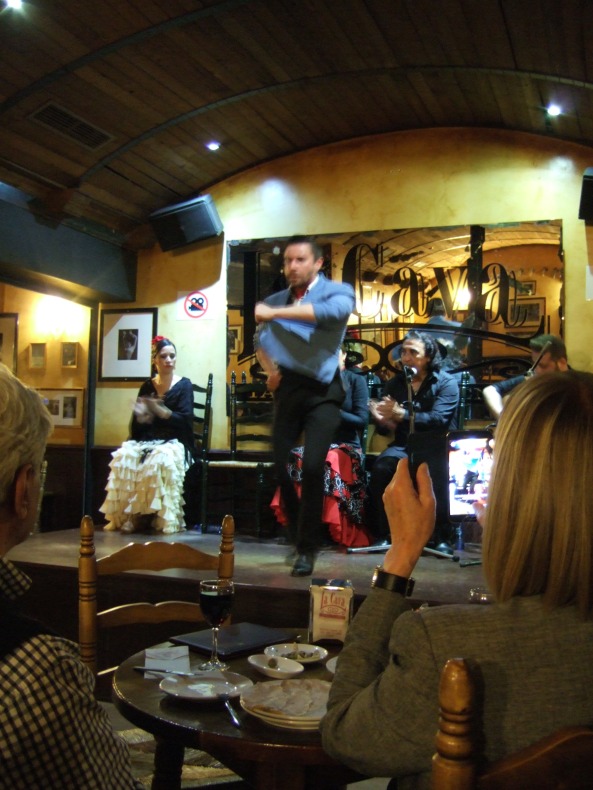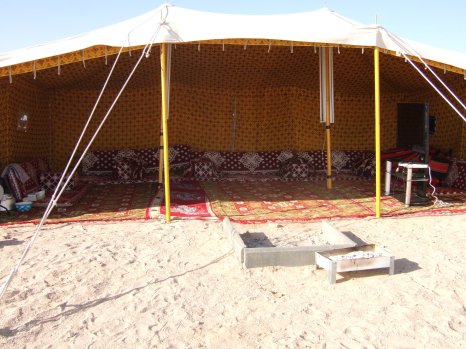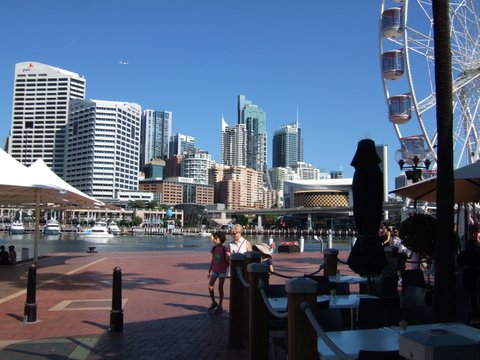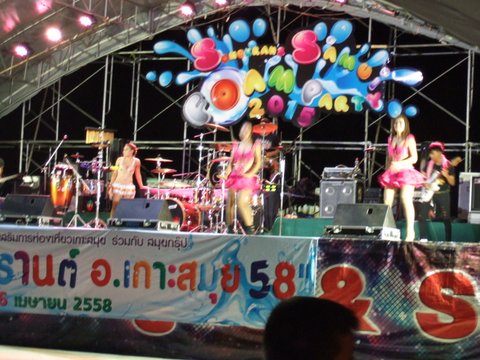Living and working in the Arab Gulf has afforded my husband and me some remarkable travel opportunities, including a visit to alluring Queenstown, New Zealand.
______________________________________________________________
New Zealand has always been a mythical place for me; the stuff of stardust, sprites, and “Lord of the Rings.” A country far removed physically from western civilization, and reportedly so isolated it was among the last land masses to be settled by humankind. Comprised of a cultural past assimilating the aboriginal, Maori people, and the influx of Europeans following the creation of a British colony on the island continent in 1840, New Zealand is a wondrous amalgam of commanding natural monuments and landscapes, and citizens with cheery, independent, and forthright outlooks.

Fairy-tale Mountains of New Zealand
The first images of New Zealand’s fairy-tale snowcapped mountains, pristine lakes, and pastoral grazing land littered with colorful flowers were conferred upon me as a child through the pages of the National Geographic magazines delivered to our home in the mail. Peering, wide-eyed, at the picturesque forms, I fancied plunging into the photographs and building a snowman in the refreshing glacial ice, and stroking the wooly curls of the sheep dotting the edges of verdant slopes. I could almost imagine myself in such a wonderland meandering alongside the sheep and goats, wings on my back, elves on either side, surveying the splendid backdrops of natural wonders, however, I did not necessarily foresee the dream coming true.
Fast forward two generations, and my husband, Bishara, and I found ourselves on a flight from the Gulf region to Queenstown, New Zealand for a 9-day Christmas holiday by way of Sydney, Australia. The approach, itself, into Queenstown airport was magical; ridges blanketed with white powdered cotton. I could practically reach out and touch the ivory glitter. Arriving at the airport I could not snag enough brochures, tourist guides, route planners, maps, promoting every kind of site, adventure, walking and biking trail in the area.

Approach into Queenstown
Before travelling, we debated whether we should rent a car, or take alternate transportation, such as buses, taxis, and such. However, after consulting with an expatriate couple who had made the journey to New Zealand, the consensus was the best option was a rental car, particularly since there is much to see, and driving and finding your way, is relatively easy. Keeping Bishara on track with “Stay to the left” or “You’re driving too far to the left; we’re going to hit the guardrail,” our greatest driving peril was maneuvering the roundabouts. Despite my navigational support, we regularly stalled out in the middle of roundabouts, uncertain of which way to look and who had the right-of-way, provoking angry stares and blaring horns. Another deliberation surrounded locations to visit in New Zealand, and whether we should establish a “home base.” Feedback from seasoned traveler friends affirmed that we should focus on the southern island, Te Waipounamu, apparently the more scenic of the two islands, and use charming Queenstown as a departure point.
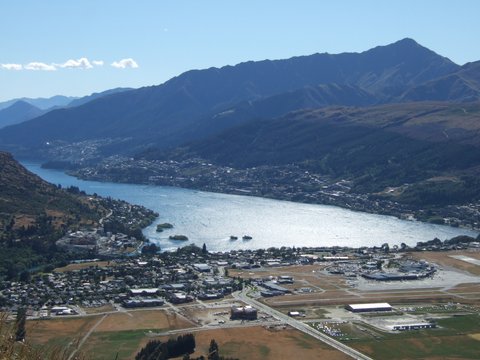
Queenstown, New Zealand

The staff at St. Moritz Hotel, our Queenstown accommodation, was exceedingly accommodating and congenial. Our first afternoon, Christophe, the concierge, was good enough to make us a dinner reservation at pleasing Sasso Italian restaurant. Ambling the short 15-minute distance from our hotel towards the restaurant we steered through town, a rather effortless feat, as many of the prominent retail shops and eating establishments are wrapped along grand Lake Wakatipu. What was more trying was propelling through the swarms of tourists and young people, which grew in direction proportion to our distance from the lake. The bikini-clad girls and brawny young men balanced on tightropes and tanned to the strains of dissonant tunes on the shores of the lake. A short distance away, Bishara and I dined alfresco on refreshing salads and classic ham and mozzarella pizza while people watching. Following dinner, we traipsed along festive and convivial pedestrian-only corridors, where the primary concern seemed to be locating a suitable restaurant meeting the varied needs of the family unit.

Quieter stretch of Queenstown beach. (Lake Wakatipu)

Sasso Restaurant (Queenstown)
The next morning, Bishara treated us to a breakfast of scrambled eggs with tomato and cheese sandwich. Although not our original intent, we booked a suite with a kitchenette, the only room type available at the time of our reservation, making me the beneficiary of some of Bishara’s yummy delectables. Thankfully, Bishara relies on releasing some of his creative juices through cooking, whereas I have no such inclinations.
After breakfast, we inspected our collection of pamphlets and brochures on sights to see and activities of interest, and developed a plan for the next several days beginning with leisurely activities and progressing to more complex ventures. Our first day would center on Arrowtown, an old gold rush village transformed into a trendy locale permeated with touristy cafes, wine shops, walking and biking routes, and a mere 30 minutes northeast of Queenstown.

Arrowtown (New Zealand)
Tasty Thai meals complemented by Thai iced tea at Arrow Thai restaurant in the heart of the diminutive former mining town were followed by glimpses of panning for gold simulations, a stream-side stroll, a drive through the nearby plush vineyards of Gibbston, and a cringe-worthy viewing of prototypic bungee jumping off the Kawarau Bridge with water touches. A reunion with a visiting school chum enhanced a second visit to Arrowtown with a sentimental luncheon filled with memories of a bygone era and news of more current times, as well as newfound friends.

Gold panning in Arrowtown.

Streamside-strolling (Arrowtown)





Former miners’ cottages. (Arrowtown)

Gibbston area winery.
Settling into a more relaxed “New Zealand” cadence on our second day, we welcomed a breathtaking 45-minute drive from Queenstown, west and north along the shoreline of Lake Wakatipu, fringed with snowy ridges, landing us in bucolic Glenorchy. Beyond enchanting surroundings, Glenorchy offers a myriad of walking, hiking and horse trails; water sports; and is quite near to aptly named “Paradise,” filming site of “The Lord of the Rings.” Subsequent to lunch at the Glenorchy Hotel Café and a walk along Lake Wakatipu, we slid along a two-lane asphalt road, and finally a gravelly passageway, on our way from Glenorchy to “Paradise,” highly expectant. The more prosaic, however, in the form of a massive tour bus stranded in the middle of a two-way lane circumvented our direct route, setting us on a more circuitous course through delightful flowered pastures and mountain passes. Feeling transported, and forcibly relaxed, it was challenging to leave this utopia.

On the way from Queenstown to Glenorchy.



Glenorchy

Lunch at Glenorchy Hotel Cafe

Lake Wakatipu (Glenorchy)

Walking along the lake. (Glenorchy)




Black swans on Lake Wakatipu (Glenorchy)



On the way from Glenorchy to “Paradise.”

Trying to find “Paradise.”

In an effort to allow for the greatest degree of flexibility and spontaneity, Bishara and I rarely make reservations for hotels or activities when travel planning, unless absolutely necessary. A cruise on Milford Sound was one such exception. Prior to travelling to New Zealand, Christophe from St. Moritz was quite helpful in priming us that a Milford Sound cruise required an advanced reservation and the most time efficient manner to reach the famous fiord was by single engine plane. Our languid days led to one of the highlights of our New Zealand trip; an awe-inspiring five-seater Cessna plane flight from Queenstown to Milford Sound and boat cruise on the famous estuary.
Arriving at the Queenstown airport, and spotting the tiny planes that would ferry us over, and between, rugged and intimidating mountain peaks evoked a skittish yet exhilarating rush. Thoughts returned to an earlier time when at 16 years-old I navigated a six-seater Cessna piloted by my father and carrying our six family members across the U.S. Then, like now, feelings of anticipatory jubilation connected to embarking on a new venture were tinged with a sensitivity surrounding what could go wrong. Back then, however, the pilot was a known quantity, my meticulous father, and I had a certain perceived level of control. Climbing into the modest aircraft at Queenstown airport I decided that if it was my time, it was my time, and it did not hurt that the flight company reported a perfect safety record and skies were clear. Rolling down the runway, nose pointed skyward, the plane hovered left to right over the runway, and we lifted off.

Ready to board Cessna plane.

Ready for liftoff!

And we’re skyward!

Gentle olive colored slopes turned a darker, richer green, and ultimately mutated into gray slate crests capped with glistening snow; the ranges enwrapping aquamarine rivers and foliate valleys. Thankfully, our pilot, Antony, a transplanted UK citizen, informed us that the mountaintops our wingtips scraped past were actually further away than they appeared from inside the plane. My initial unease unfolded into utter fascination and spellbinding feelings of being united with a higher, more spiritual, world. Gone were mundane thoughts of where we would eat that night, what we would do tomorrow, instead I was thriving in the moment rapt in the marvel of it all. A 35-minute plane ride seemed an hours’ long odyssey.












Coming in for a landing.



Skimming above a water-filled basin, our plane alighted on the Milford Sound airport’s slender runway, and soon thereafter we boarded the Southern Discoveries tourist boat. As tends to be the case when travelling, we befriended a couple while in the van taking us from our hotel to the Queenstown airport at the start of our expedition, and now our newly acquired friends shared a buffet meal with a basic international fare on the second level of the ship. Once saturated with food, drink, and conversation, we scattered to dote on the superb scenes; seals basking on rocks in the summer sun, sparkling waterfalls, and panoramic scenery of fiords huddled within flour topped rocky ridges.
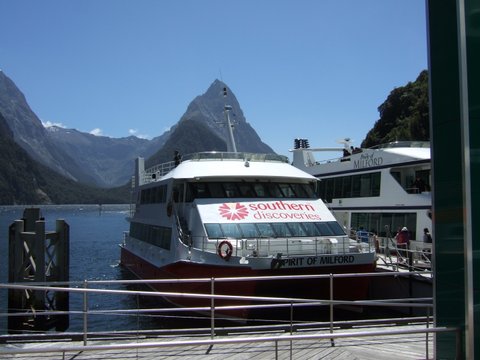

Milford Sound


Seals basking in the sun.







Our two-hour scenic cruise concluded with a final flurry of pictures to commemorate the spectacular vistas, a van ride to the adjacent airport, and me and Bishara crowding into a 6-seater Cessna with an additional sightseer, this time. The return flight, following a different route, was as magnificent as the first flight, and found me similarly dazzled; an early Christmas present.

Return flight.




Two days later it was Christmas, requiring a search for restaurants providing Yuletide-themed lunches or dinners. Of course, imposing unrealistic expectations of considerable joy and fulfillment on this particular meal would fall short. Days earlier, we noticed the Vietnamese restaurant, Saigon, near Lake Wakatipu and were enthusiastic about sampling the cuisine. Several years ago, when visiting northern Vietnam we truly appreciated the attention to balancing and ordering sweet and salt with sour, spicy, and bitter flavors to fully satisfy the palate. So, we looked forward to a savory lunch at Saigon restaurant and remembrances of an extraordinary earlier trip. After being seated, however, the abrupt exit of a family before receiving their meals, and accounts from waitresses that the restaurant was short-staffed laced with assurances that our food would arrive soon, did not bode well for a carefree and cheery holiday lunch. While our lunches were served over an hour after we arrived, and customers came and went, often with forlorn faces or following confrontational episodes with restaurant workers, the redeeming factor was succulently prepared pork rolls, salmon fried rice, and crayfish with noodles.
After our fateful lunch, we drove our fully packed rental car three miles north of Queenstown to Trelawn Bed & Breakfast near Arthur’s Point, popular haven for jet boating. Turning onto the flower and tree-lined Trelawn driveway provided a taste of the natural wonder of this exquisite bed and breakfast property. As we parked the car, Nery appeared to warmly greet us along with her husband, Michael, who helped with our luggage. Sugar cookies and tea followed seamlessly outside on the deck where we enjoyed travel stories with our hospitable hosts and splendid views of abundant foliage and mountain ridges.

Trelawn Bed & Breakfast






“Hot tubbing” at Trelawn B&B
Our two days, three nights, at Trelawn B&B were lovely and restorative, opening with breakfasts of scrambled eggs, tomato, mushroom, bacon, jams, toast, coffee and juices prepared lovingly by Nery and presented on a large, sturdy dining room table. It was a distinct gift meeting other visitors from nearby Australia and expatriates residing in Southeast Asia at these communal meals; the travel anecdotes continued serving to widen our worldview. Our event-filled days typically wound down with Michael preparing hot chocolate for us with an invitation to sit in the family lounge to watch TV and cuddle with their dogs, Kobey and Sarah.
Planning our last days in the Queenstown area, Nery and Michael recommended we book tickets for the steamship TSS Earnslaw lake cruise, which incorporates a guided tour of Walter Peak Farm, afternoon tea, and a sheep shearing demonstration. The TSS Earnslaw, a vintage vessel with polished wooden floors and seating and photos celebrating its earliest voyages, departed the Queenstown dock at two in the afternoon. Darting along the boat, we peeked at the ship’s engine room, slipped out into the frigid air of the bow, and finally perched in the stern where we listened to a pianist and joined in singing from “old time” song books.

TSS Earnslaw
Docking on the beach of the Walter Peak Farm property we were greeted by enormous grassy spaces, beautiful flower gardens and our farm guide, who introduced us to the resident deer, sheep, alpaca, and Scottish Highland Cattle. Feeding the receptive animals was a delight and looking into the virtuous eyes of the sweet ewes was heart-melting. A satisfying sampling of teas, pikelets, and scones at the refined, yet inviting, “Colonel’s Homestead” succeeded our farm tour. Our outing ended with a farm dog flanking a flock of sheep down a dirt path from pastureland to a pen and stage where our farm guide coolly sheared our wooly friend from an oversized shaggy ruminant to its svelte and prim former self, leaving behind a mound of supple fleece to be caressed by onlookers.

Walter Peak Farm







Walter Peak Farm Gardens



Sheep Shearing


Waiting for the boat.

Sailing back from Walter Peak Farm to Queenstown, we resolved to take the Skyline Gondola ride up Bob’s Peak, described as the most precipitous cable car ride in the southern hemisphere. Hoisted into an eight-seat car, swaying capriciously against the mountainside, we relished the expanding sight of Queenstown, Lake Wakatipu, the Remarkables mountain range, as well as Coronet and Walter Peaks. Coming to rest at the summit of Bob’s Peak, we indulged in glorious, virtual 360 degree views, and antics of visitors in luges rushing down winding paved tracks; a wonderful way to close out our captivating days in ethereal New Zealand.

Queenstown from Gondola.

Lift for “luging.” (Bob’s Peak)

View from Bob’s Peak.

Our plane trip back to the Arab Gulf via Sydney was consumed with bittersweet contemplation; a melancholy over leaving an extraordinary land and people, and gratefulness for a dream fulfilled.















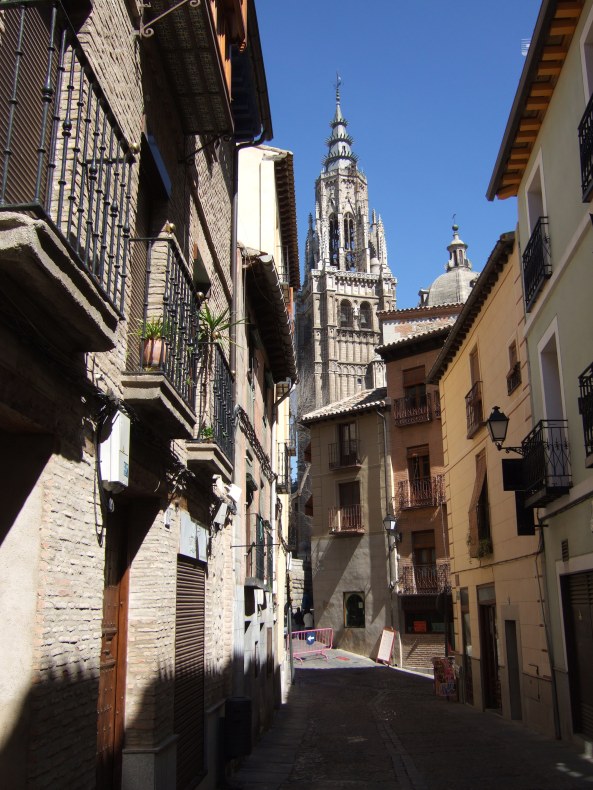










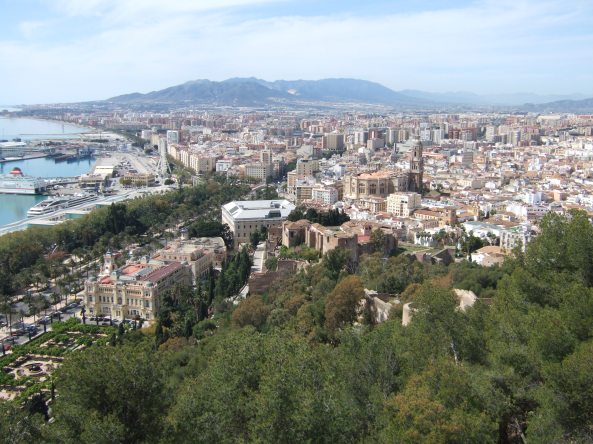
 Mediterranean (Malaga)
Mediterranean (Malaga)



 Cadiz
Cadiz